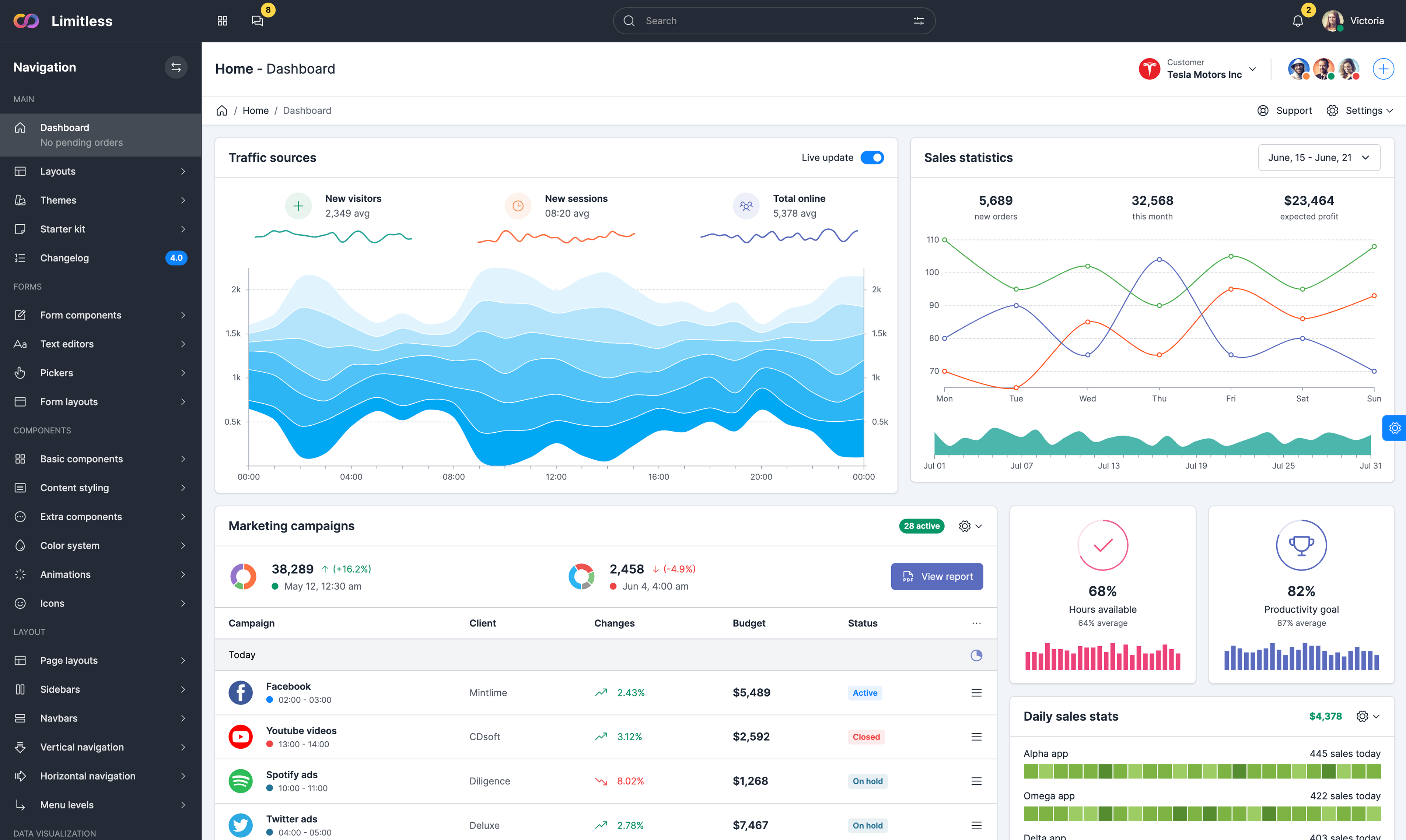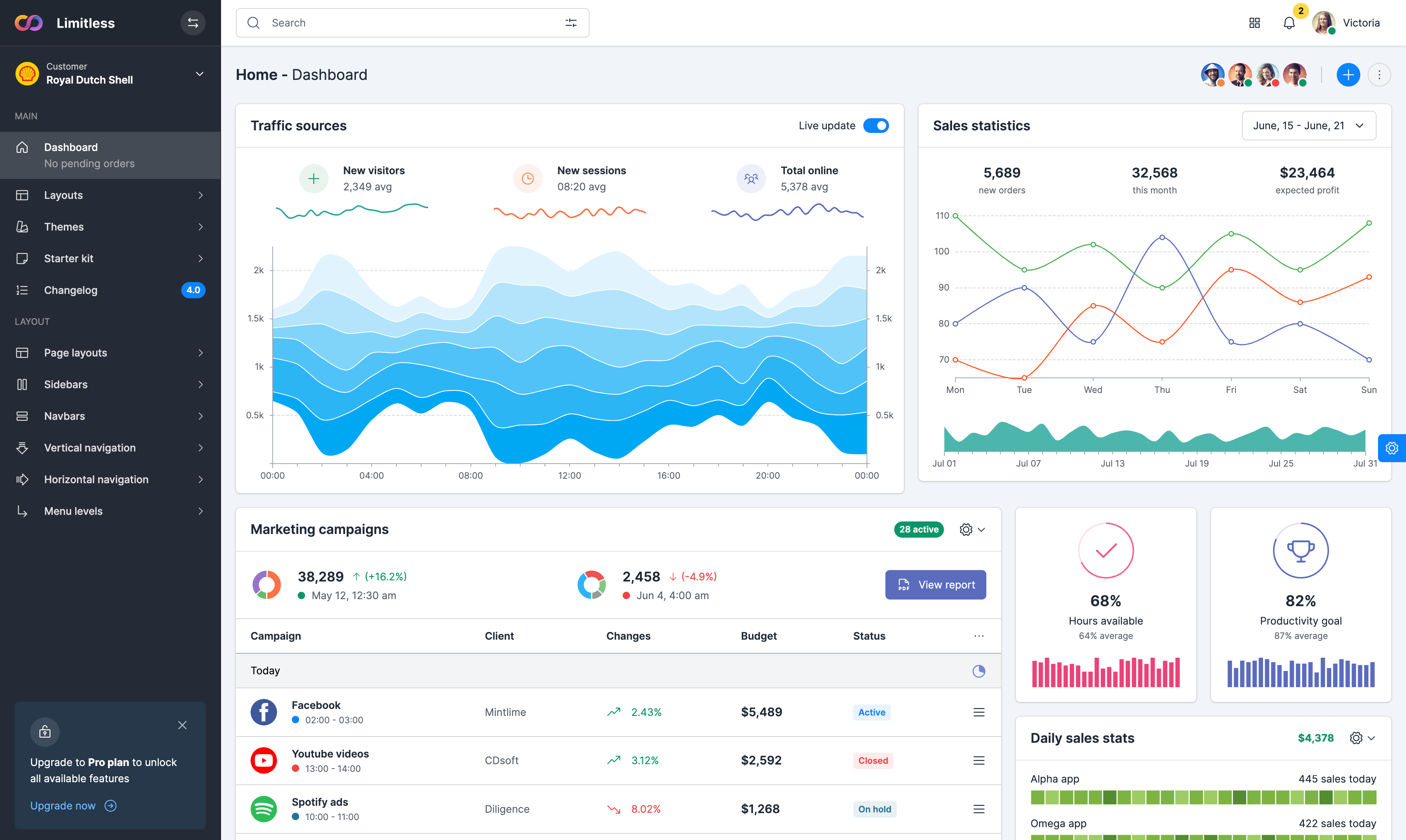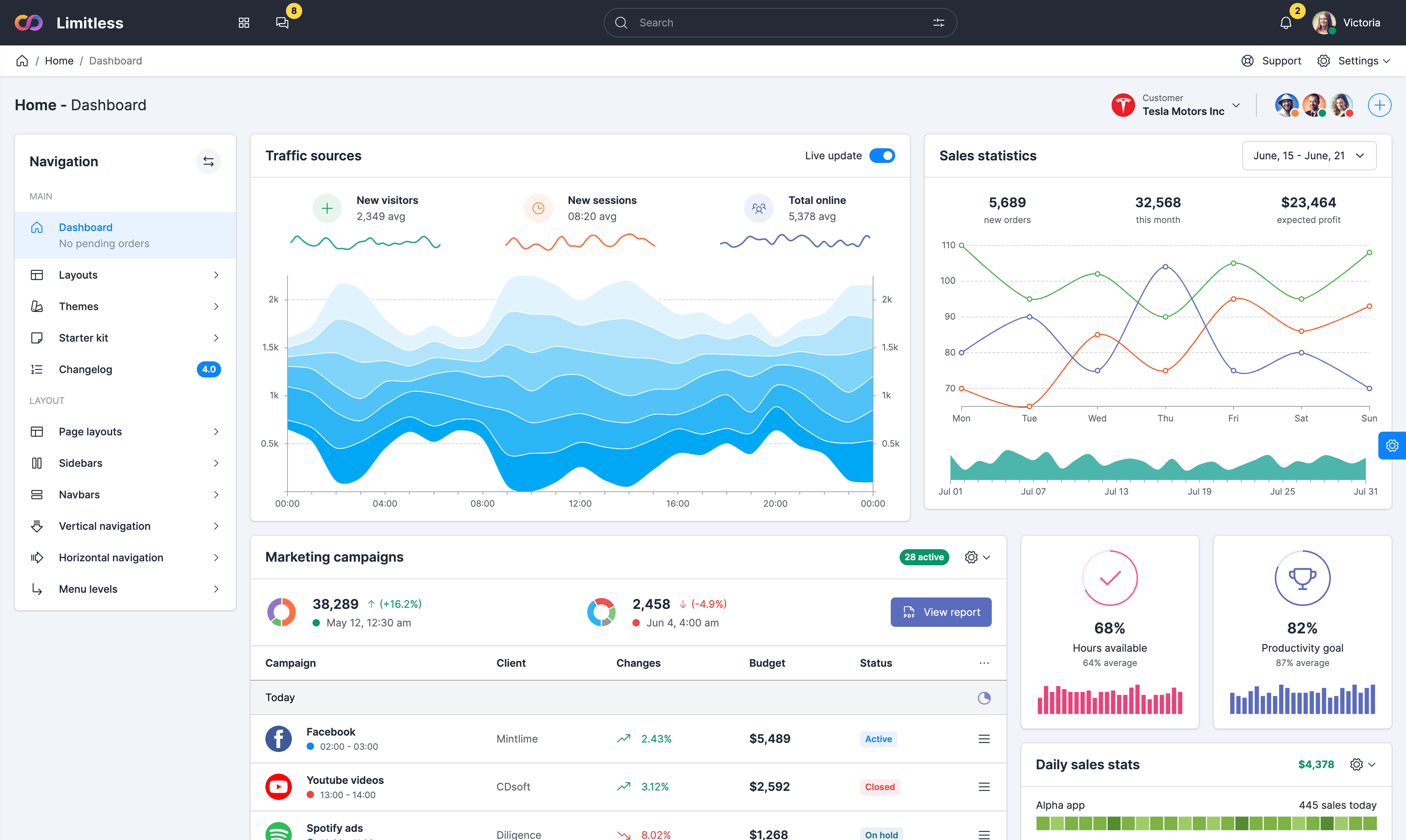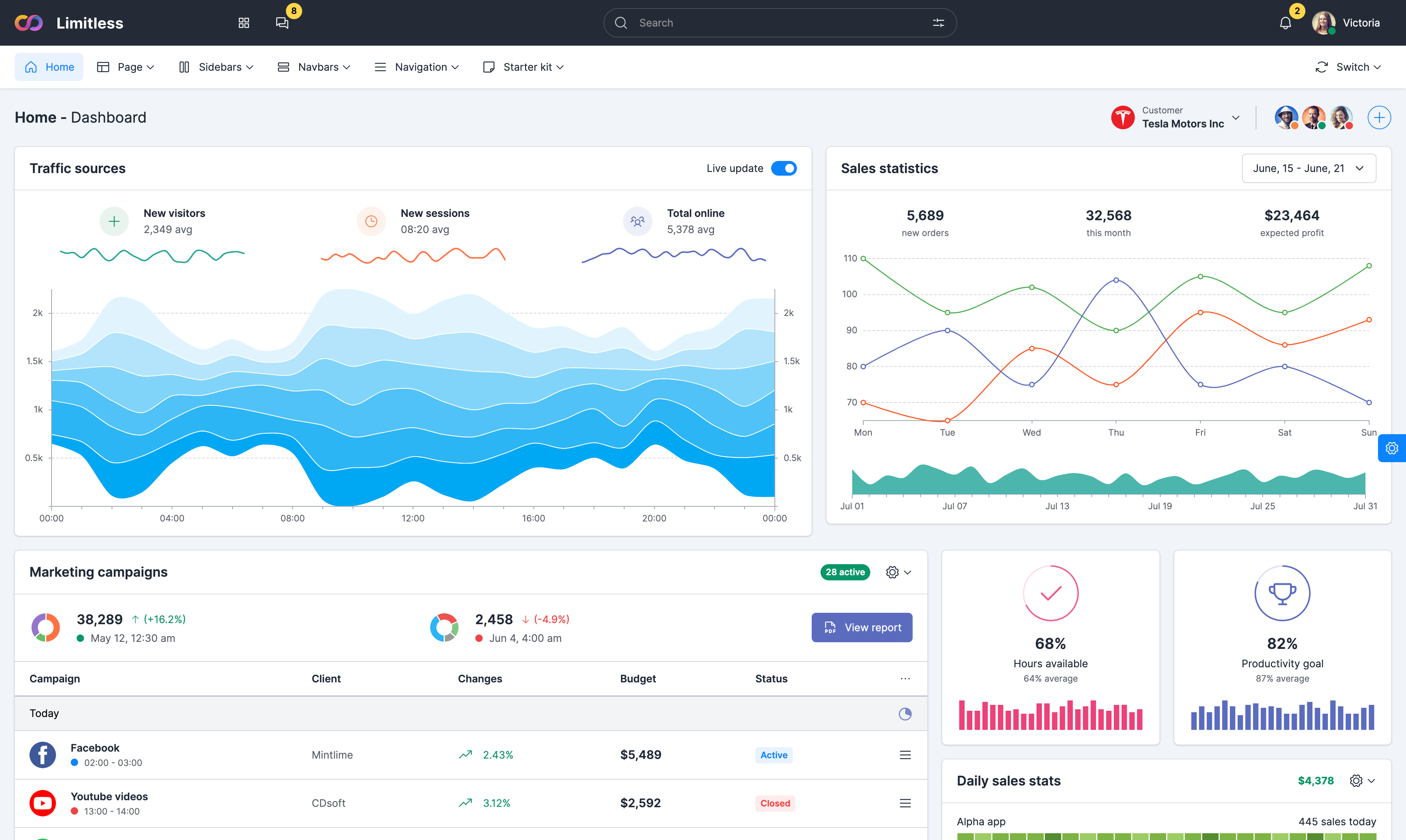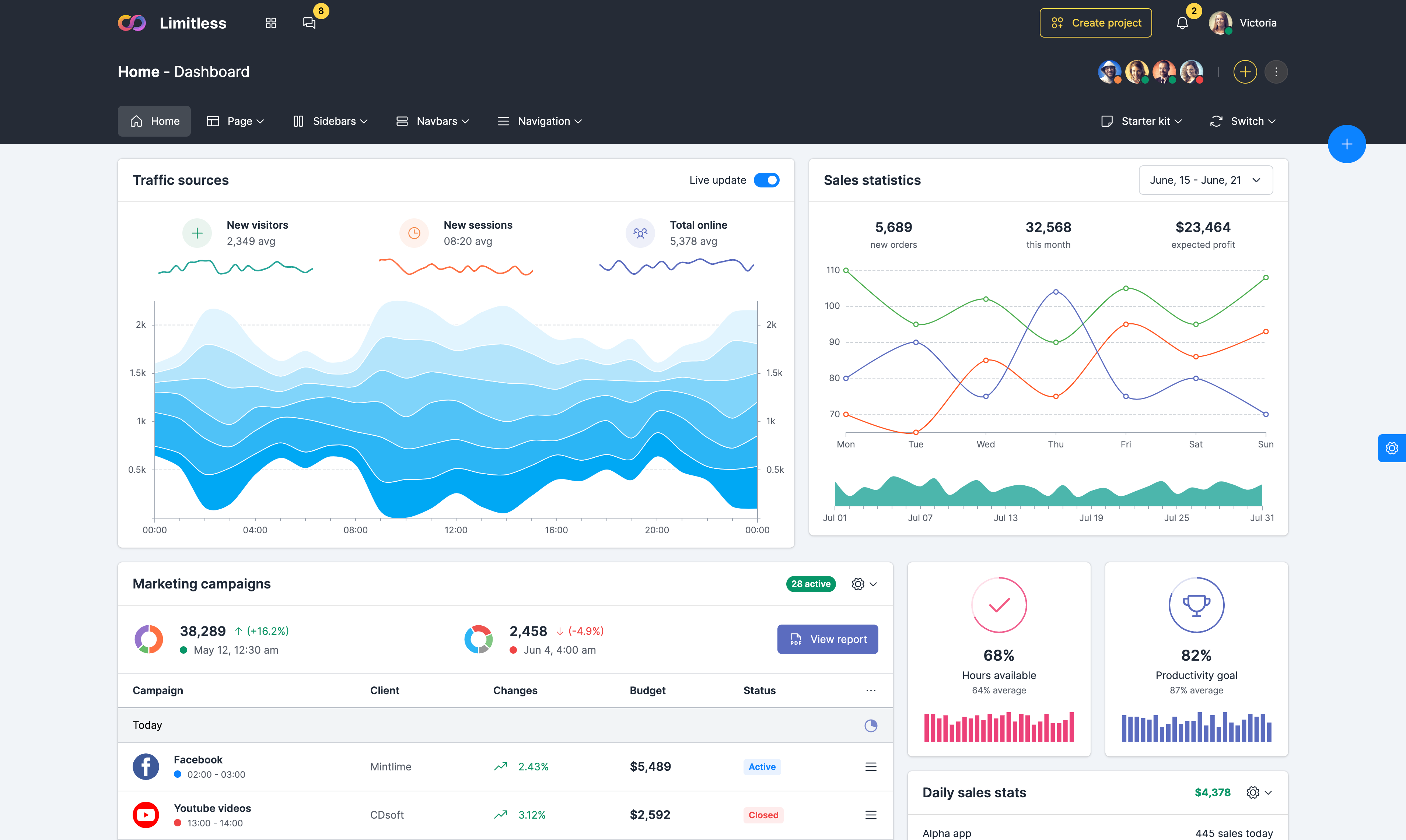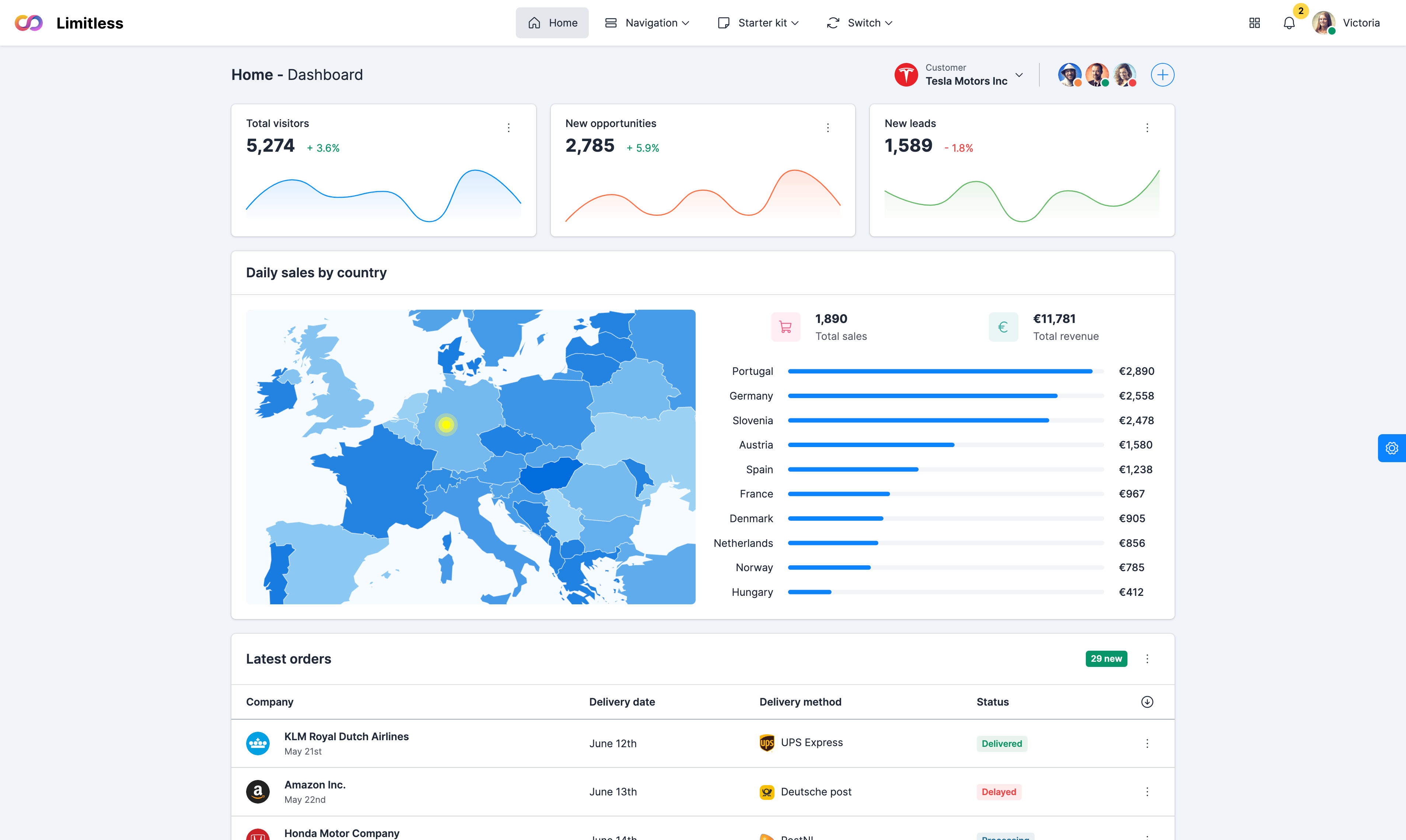Navigation
-
Main
- Dashboard No pending orders
- Layouts
- Themes
- Starter kit
- Changelog 4.0
-
Forms
- Form components
- Text editors
- Pickers
- Form layouts
-
Components
- Basic components
- Content styling
- Extra components
- Color system
- Animations
- Icons
-
Layout
- Page layouts
- Sidebars
- Navbars
- Vertical navigation
- Horizontal navigation
- Menu levels
-
Data visualization
- Echarts library
- D3 library
- C3 library
- Google charts
- Maps integration
-
Extensions
- Extensions
- File uploaders
- Event calendars
- Internationalization
-
Tables
- Basic tables
- Grid.js tables
- Data tables
- Data tables extensions
-
Page kits
- General pages
- Service pages
- User pages
- Application pages
- Widgets
Default initialization
Trumbowyg is a light, translatable and customisable jQuery plugin. Options and design are entirely configurable to suit your needs. However, the default design is compatible with Retina display and optimized for a great and simple user experience. No useless features, just the necessary ones to generate clean, semantic code.
Custom toolbar
Trumbowyg allows you to choose the buttons that appears in the button pane. The
btns option is an array containing string values representing the buttons or vertical separators (using the pipe character). To create your own custom button pane, define an array and pass it to the btns option.
Additional plugins
Trumbowyg editor comes with 10 optional plugins: base64 - allows you to insert images inline as base64; clean paste - cleans up the HTML code before insert content into the editor; colors - adds foreground and background color selectors; emoji - allows you to insert some emojis in your editor; insert audio - inserts audio files; noembed - embed any content from a link; paste image - handles paste events; preformatted - wraps selected content in pre tag; template - manages custom HTML templates; upload - adds an upload front-end allowing users to upload an image with progress bar.
© 2022 Limitless Web App Kit


















